
King's Bounty is a turn-based fantasy video game designed by Jon Van Caneghem and published by New World Computing in 1990. The game follows the player's character, a hero of King Maximus, appointed with the job of retrieving the Sceptre of Order from the forces of chaos, led by Arech Dragonbreath. King's Bounty is notably considered the forerunner of the Heroes of Might and Magic series of games.
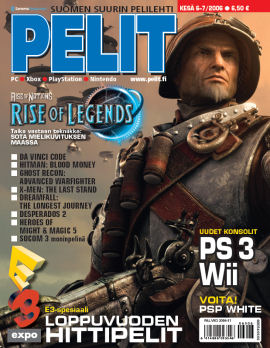
Pelit ("Games") is a Finnish video games magazine published in Helsinki, Finland.
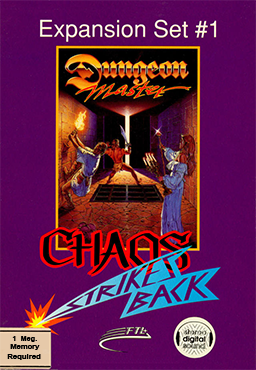
Chaos Strikes Back is an expansion and sequel to Dungeon Master, the earlier 3D role-playing video game. Chaos Strikes Back was released in 1989 and is also available on several platforms. It uses the same engine as Dungeon Master, with new graphics and a new, far more challenging, dungeon.

Conquests of the Longbow: The Legend of Robin Hood is a graphic adventure game designed by Christy Marx and published by Sierra On-Line in 1991. It is the second and final part of the Conquests series, which begins with Conquests of Camelot: The Search for the Grail. It features VGA graphics and Sierra's standard icon-driven interface first seen in King's Quest V.
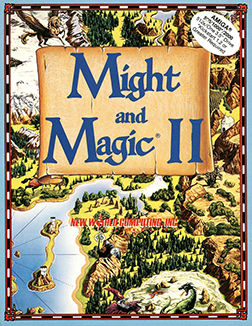
Might and Magic II: Gates to Another World is a role-playing video game developed and published by New World Computing in 1988. It is the sequel to Might and Magic Book One: The Secret of the Inner Sanctum.

Dragon Wars is a fantasy role-playing video game developed by Rebecca Heineman, published by Interplay Productions in 1989, and distributed by Activision.

Plan 9 from Outer Space is a point and click adventure game adaptation of the film of the same name. It was developed at the Irish office of Gremlin Graphics for the Amiga and Atari ST, and was released in 1992. The game was published by Gremlin in Europe and by Konami in the United States. A DOS version was also developed, though only released in the US and Europe. Two editions of the game were made available at retail; the more common version was packaged with a VHS copy of the film, while a rarer version contained only the game.

The Magic Candle: Volume 1 is a role-playing video game designed by Ali Atabek and developed and published by Mindcraft in 1989.
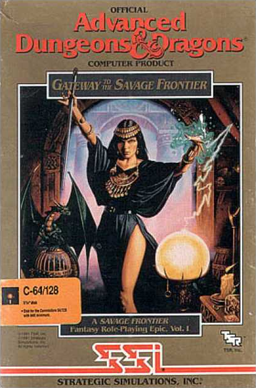
Gateway to the Savage Frontier (1991) is a Gold BoxDungeons & Dragons computer game developed by Beyond Software and published by SSI for the Commodore 64, PC and Amiga personal computers.
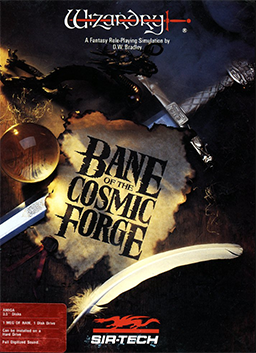
Wizardry VI: Bane of the Cosmic Forge is the 6th title in the Wizardry series of role-playing video games. It was the first in the trilogy surrounding the Dark Savant, which was followed by Wizardry VII: Crusaders of the Dark Savant and Wizardry 8. It was developed by Sir-Tech Software, Inc. and was released on the Amiga and DOS platforms in 1990 by the same company, and for the Super Famicom in Japan in 1995 by ASCII.
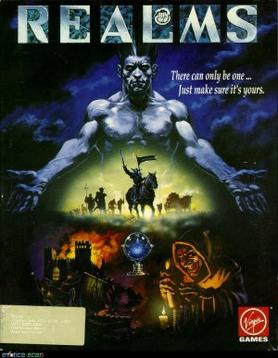
Realms is a 1991 real-time strategy game produced by Graftgold Ltd. for MS-DOS, Amiga, and Atari ST. It was published by Virgin Games. In Realms, the player has to build cities, collect taxes, create troops and fight enemy cities and troops in order to defeat their opponents.

Castles II: Siege and Conquest is a 1992 real-time strategy game for the MS-DOS, developed by Quicksilver Software and published by Interplay Productions. Castles II is the sequel to the 1991 game Castles. Ports for the Amiga CD32, FM Towns, NEC PC-9801 were released in 1993. DOS CD-ROM version and Macintosh port were released in 1994. The Macintosh version of the game was published by Interplay's MacPlay brand name. GOG.com released an emulated version for Microsoft Windows in 2008.

The Immortal is an isometric action-adventure game originally created by Will Harvey and released by Electronic Arts in 1990 for the Apple IIGS. It was soon ported to the Amiga, Atari ST, DOS, Nintendo Entertainment System, and Genesis. A wizard is attempting to find his mentor in a large and dangerous labyrinth. It has a high degree of graphic violence. In 2020, the NES port was re-released on the Nintendo Switch Online service, while the Genesis port was re-released on the Piko Collection Collection 1 cartridge for the Evercade.

Hard Nova is a role-playing video game developed by Malibu Interactive and published by Electronic Arts in 1990 for DOS, Amiga and Atari ST. It is a follow-up to Sentinel Worlds I: Future Magic.
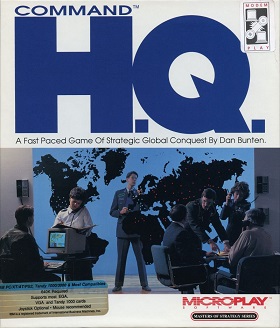
Command HQ is a real-time strategy world domination game. It was released in 1990 by Microplay Software and was created by designer Danielle Bunten.

Castles is a video game developed by Quicksilver and published by Interplay Entertainment in 1991 and 1992. The game involves the construction of a series of castles in Wales and the Welsh Marches during the 13th century. Castles was quickly followed by an expansion, Castles: The Northern Campaign, and a sequel, Castles II: Siege and Conquest.

Mines of Titan is a single-player role-playing video game, developed by Westwood Associates, and published by Infocom in 1989 for Apple II, Commodore 64, and MS-DOS.

Crusaders of Khazan is a computer adaptation of the tabletop role-playing game Tunnels and Trolls, developed and published by New World Computing in 1990 for DOS, FM Towns, PC-88 and PC-98. The game is available from Flying Buffalo and in Fiery Dragon's Tunnels and Trolls 30th Anniversary Edition. The game was an international production, designed and directed in the US but programmed in Japan.

The Keys to Maramon is a video game published by Mindcraft in 1990 for MS-DOS. It takes place in the same universe as The Magic Candle.
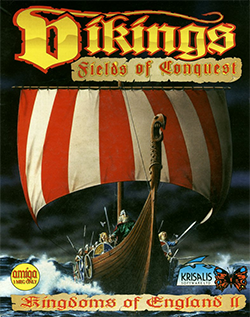
Kingdoms of England II: Vikings, Fields of Conquest is a computer game developed by Realism Entertainment in 1992 for the Amiga and DOS.




















